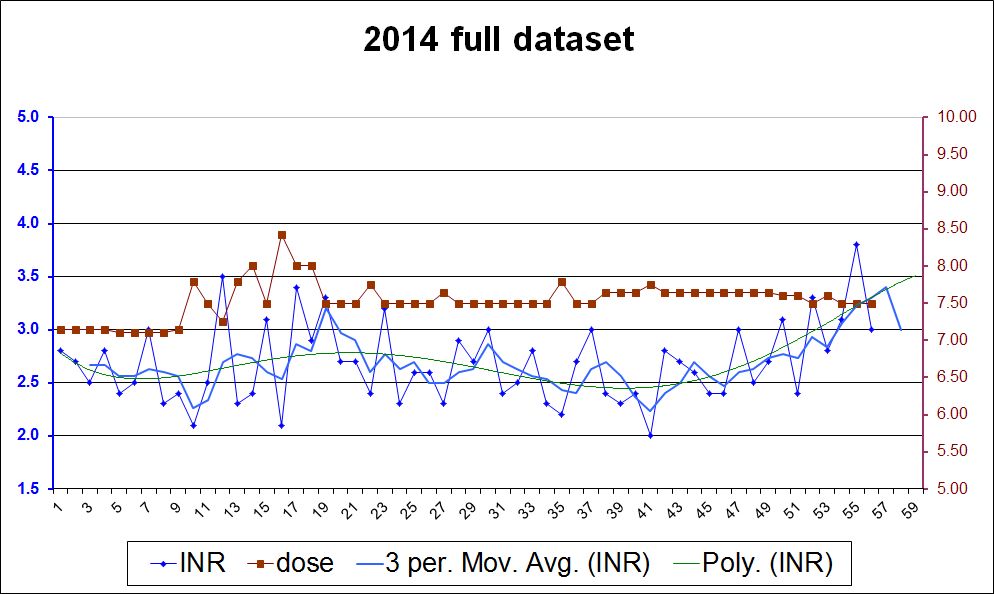pellicle
Professional Dingbat, Guru and Merkintologist
Hi
my dose has been 7.25mg for the last few months, but recently something changed and my INR went high. So here is my steps and methods in working through handling this and determining my new dose:
http://cjeastwd.blogspot.com/2015/10...r-example.html
best wishes
my dose has been 7.25mg for the last few months, but recently something changed and my INR went high. So here is my steps and methods in working through handling this and determining my new dose:
http://cjeastwd.blogspot.com/2015/10...r-example.html
best wishes

























